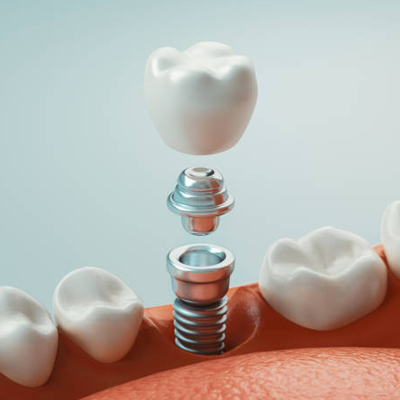
Severely infected teeth may need a tooth extraction. However, the dentist may check whether the natural tooth can be maintained by performing root canal treatment. The endodontist will clean the decayed area, and remove the damaged nerves and tissues. A dental crown will be placed thereafter. It is placed to enhance support for the teeth that have been weakened due to the infection and root canal treatment.
What is Root Canal Treatment?
It is a standard dental restoration method for repairing an infected tooth. There are various symptoms based on which you can tell that you need a root canal treatment. It includes teeth sensitivity to heat and cold, swelling, pain, and unpleasant taste in the mouth. Going for a regular dental visit will help the dentist diagnose any severe infection in the teeth. Ignoring the infection may lead to the teeth becoming irreparable. During such scenarios, the dentist may recommend a tooth extraction. It becomes necessary to prevent the adjacent teeth from getting affected.
The dentist opens up the pulp chamber to access the area that has been infected. The endodontist then removes the damaged tissues, pain-causing nerves, and decay. The canals are prepared to accommodate the filling materials. X-rays ensure that the repaired teeth are free of any infected pulp.
What is the Need for a Root Canal Treatment?
If a bacterial infection has progressed toward the pulp of the teeth, then a root canal treatment becomes necessary. If your tooth has become loose or if you experience pain at the time of biting or chewing, it indicates a bacterial infection within the teeth. If left untreated, the infection which has affected the pulp chamber slowly moves toward the root canal system. Swelling of gums near the affected teeth, facial swelling, pus coming out of the infected teeth and intense pain at chewing or biting food indicates the need for immediate treatment. If left untreated, the tooth becomes permanently damaged.
How to Brush After Root Canal Treatment?
The whole brushing process should be performed gently. Make use of toothpaste that your dental practitioner has recommended. Flossing should also be performed gently so that the gums and teeth are not pressured much. Mouthwash can also play an essential role in keeping bacteria at bay, thus reducing infection chances. Check whether the healing process is taking place as expected by visiting a dentist. Brushing can be performed once the medication used to numb the teeth has worn off. Don’t brush hard since it can displace the temporary restoration or temporary dental crown that has been placed until the permanent dental crown is received from the dental laboratory.
Take Care of What You Eat After Root Canal Treatment
Your teeth may feel sensitive for a few days after completing the root canal treatment. Avoid food that is hard to chew or sticky since it may put more pressure on your teeth. Food that irritates your teeth, such as fries, nuts, chips, and hard candies, should be avoided. It would be best if you also did not bite hard or forcefully chew food since it can again cause infection in the teeth.
Summary
A local anesthetic will be provided to the patient before the treatment begins. Once the numbness wears off after the treatment, you can prefer to eat soft foods that are easy to chew, such as soups, mashed potatoes, pasta, oatmeal, and mashed banana. After root canal treatment, the dentist will give clear instructions regarding what to eat. The aftercare instructions have to be followed without fail to experience faster recovery. Thus you can adequately speak, chew and eat without any difficulties after the completion of root canal treatment.









